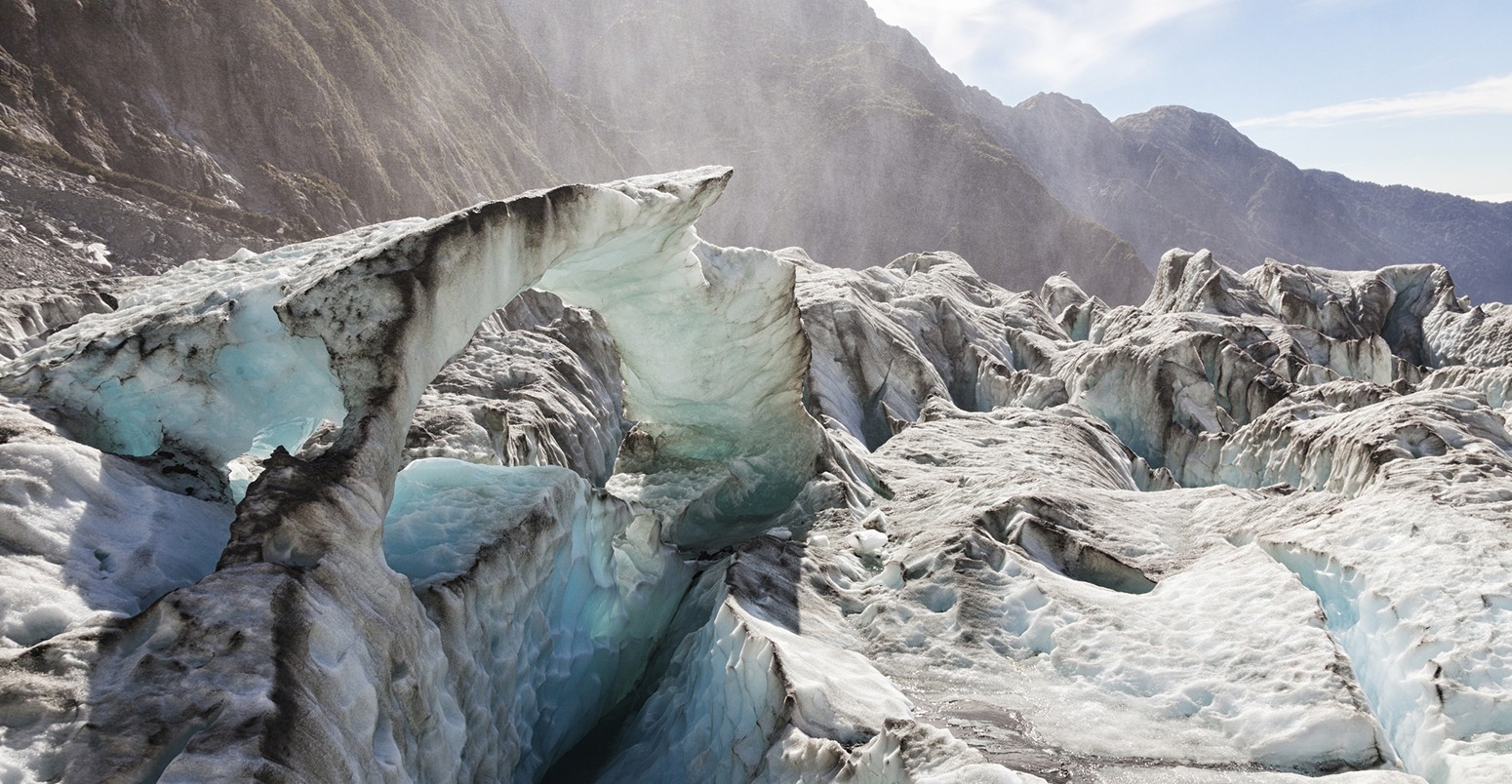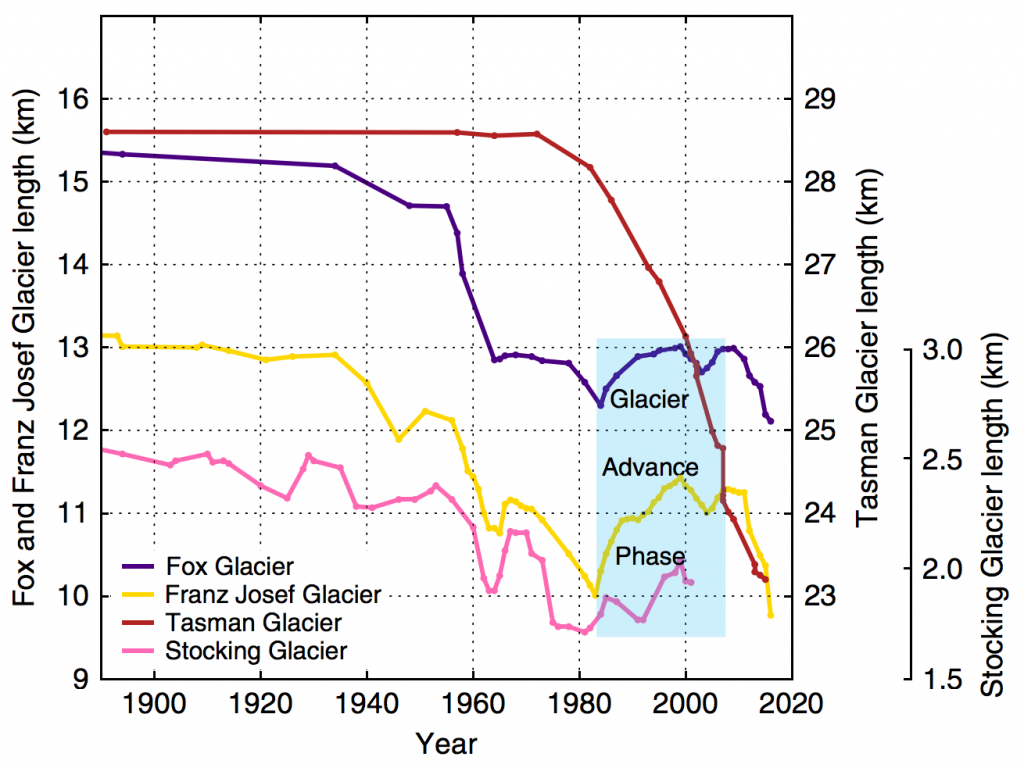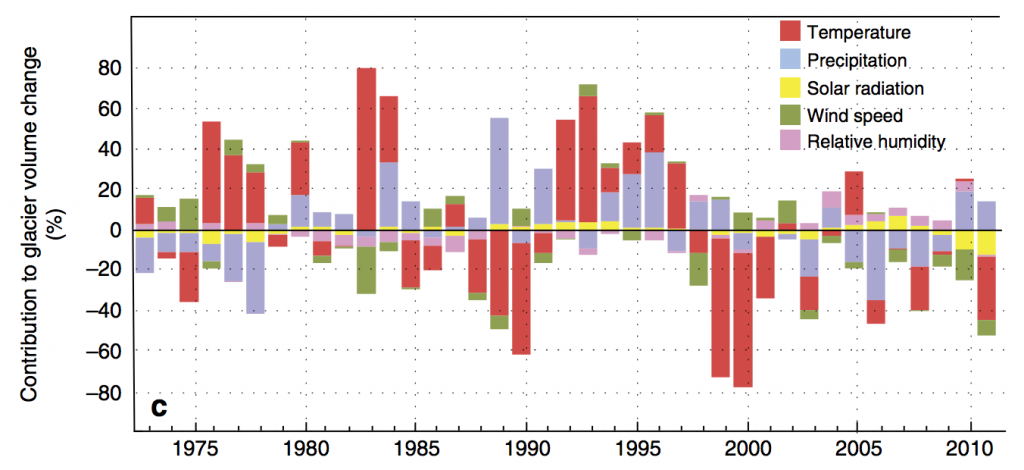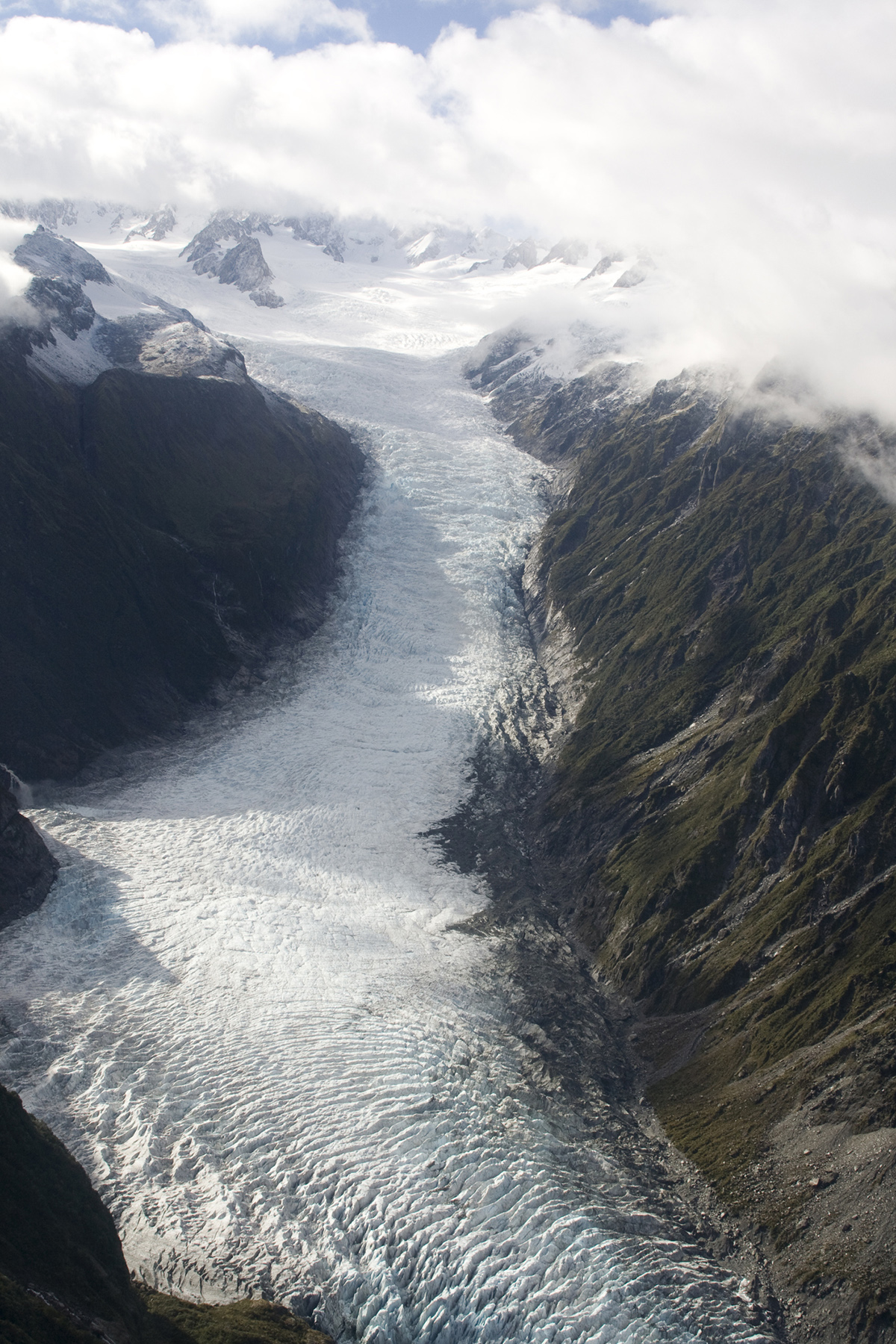
‘Cluster of cold years’ behind New Zealand’s surprising glacier growth
Robert McSweeney
02.14.17Robert McSweeney
14.02.2017 | 4:00pmAcross the world, scientists have recorded the retreat of hundreds of glaciers, providing categorical evidence that the Earth’s climate is warming.
But in a few pockets, glaciers have bucked this trend by advancing. One of these places is the Southern Alps in New Zealand, where several dozen glaciers grew in length between the 1980s and the late 2000s.
While previous research has never been quite able to pin down why this happened, a new study says it can. The findings, just published in Nature Communications, show that “a cluster of cold years” locally allowed the glaciers to advance, rather than an increase in snow as earlier research has suggested.
Since the period of advance stopped in 2008, the glaciers are retreating once again. And they’re now smaller than ever before in the observed record, the lead author tells Carbon Brief.
Glacier advance
New Zealand has around 3,000 glaciers, most of which are found in the Southern Alps, a mountain range extending 500km from north to south along the South Island.
Though scientists are only able to keep tabs on a relatively small proportion of these rivers of ice, the World Glacier Monitoring Service shows that 58 have advanced at some point between 1983 and 2008.
Whether a glacier retreats or advances each year largely depends on its mass balance – the difference between how much snow it receives and the amount of its ice that melts away.
Among the glaciers that have advanced are two of New Zealand’s most famous: Franz Josef and Fox. Franz Josef, for which scientists have the longest observational record of any glacier in the southern hemisphere, advanced for 19 years. In this time it regained about half of the 3km it had lost before 1982, the new study says.
In the chart below, you can see how these glaciers, along with two others, have fared in recent decades. The blue shaded box shows where the retreat of some glaciers reversed in the 1980s, after which they advanced for around two decades.

Historic length changes for four glaciers in New Zealand: Fox (purple line), Franz Josef (yellow), Tasman (red) and Stocking (pink). The blue shaded box highlights the recent phase of glacier advance. Source: Mackintosh et al. (2017)
It’s worth noting that despite the advance of several glaciers in the Southern Alps, many continued to retreat – this included New Zealand’s largest glacier, Tasman (see red line in above chart). Overall, the region lost ice through the 1980s, 1990s and 2000s, the researchers say.
The mixed behaviour of New Zealand’s glaciers has been something of a scientific puzzle – until now, says lead author Dr Andrew Mackintosh, associate professor and deputy director of the Antarctic Research Centre at Victoria University of Wellington. He tells Carbon Brief:
“Nobody has satisfactorily explained this glacier advance phase before. There was a debate about whether temperature or precipitation was responsible. We show that it was mostly temperature.”
Air temperature
The researchers identified temperature as the main driving force behind the advancing glaciers using multiple model simulations of glacier changes between 1972 and 2011.
On each model run, they changed one climate variable at a time, while the others were held constant. Comparing the simulations against the observed changes in the glaciers, the researchers could then spot which aspect of the climate has had the biggest impact.
The results reveal that air temperature was the dominant influence on the glaciers over 1980-2005, accounting for 56% of the changes in volume. This was followed by precipitation (27%) and then other factors such as wind, cloudiness and humidity (17%).
You can see this in the figure below, which shows the percentage contribution to changes in glacier volume for each year. Air temperature (red bars) tends to have the largest impact, with precipitation (purple), solar radiation (yellow), wind speed (green) and humidity (pink) also shown. Where the bars are above the zero line, the variable contributed to an increase in glacier volume, and vice versa.
The period of cool temperatures over the Southern Alps were enough for many glaciers to advance, the researchers say, despite the continued warming recorded across the Earth as a whole.

The relative contributions of different climate variables to glacier volume changes between 1972 and 2011. Chart shows rir temperature (red bars),precipitation (purple), solar radiation (yellow), wind speed (green) and humidity (pink). Source: Mackintosh et al. (2017)
A ‘complicated’ picture
The findings prompt two questions: why did only some of New Zealand’s glaciers advance, and what caused the period of cooler temperatures?
The answer to the first question lies in the locations of the glaciers. Those on very steep slopes, such as the Franz Josef and Fox glaciers, are thin, fast-moving glaciers that respond quickly to changes in climate – even within a few years, the paper says:
“Very few glaciers on Earth are capable of responding this quickly.”
In contrast, those on gentle slopes, such as the Tasman glacier, are slower-moving and often covered in debris, which makes them less sensitive to short-term fluctuations in conditions.

Aerial view of part of the Franz Joseph Glacier in New Zealand. Credit: Hofmeester/iStock Getty Images.
For the second question, the paper finds that the cool temperatures were linked to unusual southerly winds and low sea surface temperatures (SSTs) in the Tasman Sea (between Australia and New Zealand).
The low SSTs brought spring and summer air temperatures that were up to one degree cooler than average in the Southern Alps. This meant that precipitation was more likely to fall as snow than rain during spring, and also reduced glacier melt in summer.
These conditions, in turn, were caused by natural fluctuations in wind patterns over the South Pacific, the researchers say.
Taking all these factors into account, the mix of advancing and retreating glaciers in New Zealand between 1983 and 2008 was therefore a result of both natural and human-induced changes in climate. It’s a complicated picture, Mackintosh says:
“Anthropogenic climate change is most likely responsible for the negative mass balance years since 2005, and the overall ice loss during the full period. Natural climate variability is most likely responsible for causing the glacier advances. But it is not quite that straightforward, and some component of anthropogenic forcing might have contributed to advance, and vice versa.”
‘Overall pattern of retreat’
Since the period of advance ended in 2008, the glaciers in the Southern Alps have seen a “massive retreat,” says Mackintosh. Franz Josef, for example, has lost more than 1.5km in length.
And while the glaciers could advance for short periods again, this is likely to be minor compared to the overall pattern of retreat, says Mackintosh.
In fact, warming of 2C or more could spell the end for many of New Zealand’s glaciers, warns Mackintosh in a press release:
“If we get the two-to-four degrees of warming expect by the end of the century, our glaciers are going to mostly disappear.”
Correction: The Southern Alps extend 500km, not 5,000km.
Mackintosh, A. N. et al. (2017) Regional cooling caused recent New Zealand glacier advances in a period of global warming, Nature Communications, doi:10.1038/NCOMMS14202

